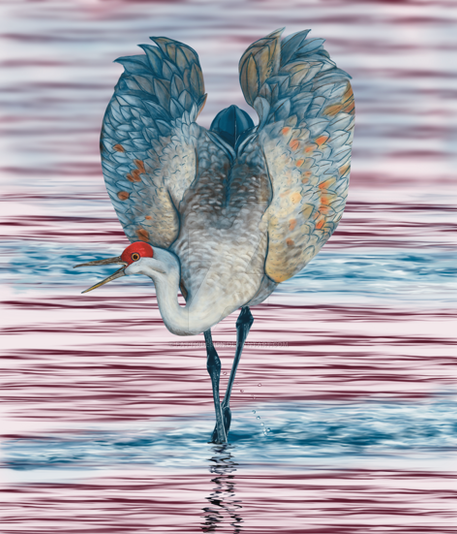HOME | DD
 LADAlbarran2001 — Notiomastodon platensis
LADAlbarran2001 — Notiomastodon platensis

#draw #drawing #gomphothere #megafauna #paleoart #pleistocene #notiomastodon #notiomastodonplatensis #proboscidean
Published: 2021-05-05 09:19:55 +0000 UTC; Views: 9421; Favourites: 139; Downloads: 14
Redirect to original
Description
Notiomastodon platensis fue un gonfoterio que habitó exclusivamente América del sur durante el Pleistoceno (desde el principio del periodo hasta el final, llegando a estas tierras mediante el Gran intercambio biótico Americano), es popularmente conocido como el gonfoterio de las tierras bajas, pues este tenía preferencia por las planicies del continente, teniendo una amplia variedad alimenticia por la cantidad de hábitats en los que se han encontrado sus fósiles, cosa opuesta a su pariente Cuvieronius, conocido de forma opuesta como el gonfoterio de montaña, razón por la cual no habrían competido por recursos alimenticios. Otra diferencia opuesta a su pariente es que Cuvieronius tenía las defensas cubiertas de esmalte y curvadas de adentro hacia afuera en la punta, mientras que Notiomastodon tenía las defensas más similares a las de los elefantes modernos, y al igual que estos habrían variado ligeramente entre ejemplares en longitud y forma, aunque la morfología sería la misma. Anteriormente se consideraban muchas especies de gonfoterios sudamericanos tales como Stegomastodon y Haplomastodon, pero que tras análisis morfológicos arrojaron como resultado que la gran mayoría eran una misma, todas sinónimos de Notiomastodon al menos en Sudamérica, ya que Stegomastodon es exclusivo de América del Norte. Habría tenido una talla y estilo de vida similar a la de los elefantes asiáticos.Notiomastodon platensis was a gomphothere that inhabited exclusively South America during the Pleistocene (from the beginning of the period to the end, reaching these lands through the Great American Interchange), it is popularly known as the lowland gomphothere, as it had preference for the plains of the continent, having a wide nutritional variety due to the amount of habitats in which its fossils have been found, which is the opposite of its relative Cuvieronius, known in an opposite way as the mountain gomphothere, which is why they would not have competed by food resources. Another difference opposite to its relative is that Cuvieronius had the tusks covered with enamel and curved from the inside out at the tip, while Notiomastodon had the tusks more similar to those of modern elephants, and like these they would have varied slightly between specimens in length and shape, although the morphology would be the same. Previously, many species of South American gomphotheres such as Stegomastodon and Haplomastodon were considered, but after morphological analysis they showed that the vast majority were the same, all synonyms of Notiomastodon at least in South America, since Stegomastodon is exclusive to North America. It would have had a size and lifestyle similar to that of Asian elephants.
Related content
Comments: 2

Interesting, I like the ear design and it's a bit like the African Elephant's ears.
👍: 1 ⏩: 1

👍: 0 ⏩: 0

























